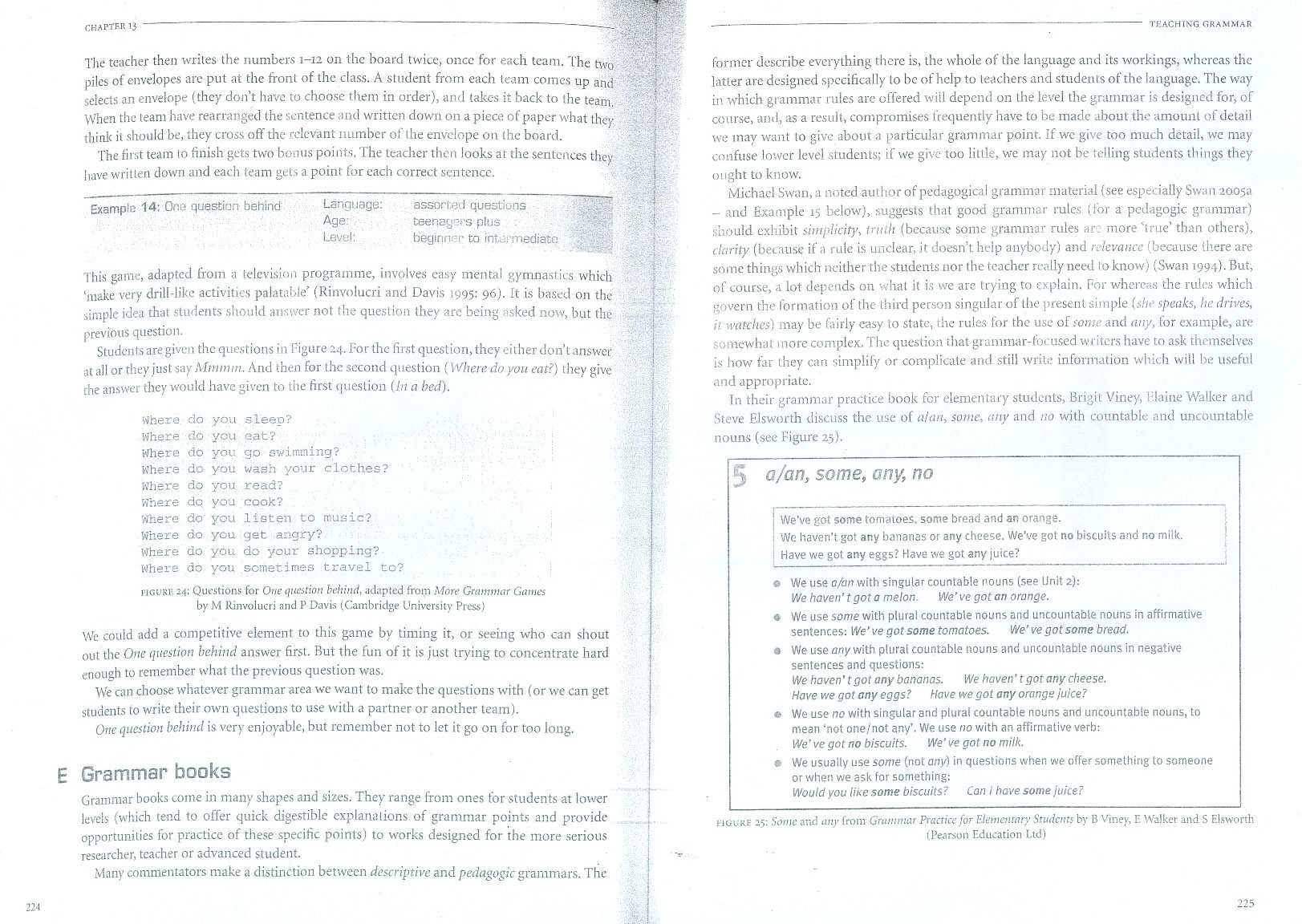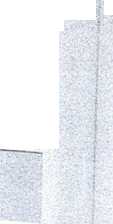0018


CHAPTFR 13
The tcachcr then wriles the nurabers 1-12 on the board twice, oncc for each team. The hv ' ?
assorted questions teensgars plus beginnar to intarmediato

piles of envelopes arc put at the front of the class. A student frotn eacli team comes up and sclects an envelope (they dont have to choose them in order), and takes it back to the team When the team have rearranged the sentence and written down on a piece of paper what th • think it should be, they cross off the relevant number of the envclope on the board '
The first team to finish gets two bonus points. The teacher then looks at the sentcnces the have written down and each team gets a point for each correct sentence.
Langnage:
Age:
Level:
Examp!c 14: Ona question behind
1 his gamę, adapted froin a television programme, involves easy mental gymnastics which 'make very drill-likc activities palatable’ (Rinvolucri and Davis 1995: 96). It is based on the simple idea that students should answer not the question they arc being asked now, but the previous question.
Students are given the questions in Figurę 24. For the first question, they either don’t answer at all or theyjust say Mmmm. And then for the second question (Where doyou eat?) they give the answer they would have given to the first question (In a bed).
Where do you sleep?
Where do you oat?
Where do you go swimming?
Where do you wash your clor.hes?
Where do you read?
Where do you cook?
Where do you listen to musie?
Where do you get angry?
Where do you do your shopping?
Where dó you sometimes travel to?
HGURB 24: Questions for One ąueslion behind, adapted from Morę Grammar Games by M Rinvolucri and P Davis (Cambridge University Press)
We could add a competitive element to this gamę by timing it, or seeing who can shout out the One ąuestion behind answer first. But the fun of it is just trying to concentrate hard enough to reniember what the previous question was.
We can choose whatever grammar area we want to make the questions with (or we can get students to write their own questions to use with a partner or another team).
One ąueslion behind is very enjoyable, but remember not to let it go on for too long.
E Grammar books
Grammar books come in many shapes and sires. They rangę from ones for students at lower levels (which tend to offer quick digestible explanations of grammar points and provide opportunities for practicc of these specific points) to \\'orks designed for the morę serious researcher, teacher or advanced student.
Many commentators make a distinction betwecn descriptive and pedagogie grammars. The
formcr describe everything there is, the whole of the language and its workings, whereas the latter arc designed specifically to be of help to leachers and students of the language. The way in which grammar rules are offered will depend on the level the grammar is designed for, of course, and, as a result, compromises frequently have to be madę about the amount of detail we may want to givc about a particular grammar point, if wc give too much detail, we may confuse lowcr level students; if we givc too little, we may not be telling students things they ought to know.
Michael Swan, a noted autiior of pedagogical grammar materiał (see especially Swan 20050 - and Example 15 below), suggests that good grammar rules (tor a pedagogie grammar) should cxhibit simplicity, truth (because sonie grammar rules are morę 'true’ than others), darity (because if a rule is unclear, it doesn’t heip anybody) and relevance (because there are some things which neither the students nor the teacher really need 10 know) (Swan 1994). But, of course, a lot depends on what it is we are trying to explain. For whereas the rules which govern the formation of the third person singular of the presenl simple (she speaks, he drives, it watches) may be foirly easy to State, the rules for the use of some and any, for example, are somewhat morę complex. The question that grammar-focused writers have to ask themselves is how far they can simplify or complicate and still write information which will be useful and appropriate.
In their grammar practice book for elementary students, Brigit Viney, Elaine Walker and Steve Elsworth discuss the use of alan, some, any and no with countable and uncountable nouns (see Figurę 25).
5 a/an, some, any, no
] \Ne'\/e got some tomatoes, some bread and an orange.
We haven't got any bananas or any cheese. We’ve got no biscuits and no milk.
■ Have we got any eggs? Have we got any juice?
© We use a/an with singular countable nouns (see Unit 2):
We haven'tgot a melon. We’ve got an orange.
© We use some with plural countable nouns and uncountable nouns in affirmative sentences: We've got some tomatoes. We’ve got some bread.
9 We use any with plural countable nouns and uncountable nouns in negative sentences and questions:
We haven’ t got any bananas. We haven’ tgot any cheese.
Have we got any eggs? Have we got any orange juice?
* We use no with singular and plural countable nouns and uncountable nouns, to mean ‘not one/not any’. We use no with an affirmatiue verb:
We’ve got no biscuits. We’ve got no milk.
© We usualty use some (not any) in questions when we offer something to someone or when we ask for something:
Would you like some biscuits? Can i have some juice?
tuGUKE 25: Some and any from Grammar Practice for Elementary Students by B Viney, E Walker and S Elsworth
(Pearson Education Ud)
225
Wyszukiwarka
Podobne podstrony:
CHAPTER13 The tcacher then writes the numbers 1-12 on the board twice, once for each team. The two p
metodyka nursery rhymes02 <> o o o o o o o Photocopy this page. Stick it j? on card. Cut out a
Historical Grammar�5 2016-01-13 The
Theoretical and Methodological Problems 13 and social and economic areas in a presentation on the im
13. The letter number five in the alphabet is ... a) E b) I
JPRS-UMS-92-003 16 March 1992ANALYSIS, TESTING 13 The Effect of a Free Surface on the Distribution o
70 Magdalena Kacperska SP 4 ’13 The economy is a woman. Women in the economic life of Poland -
DIMENSIONS5102 (13) the key To make it casicr to sort your colors, we ve separated them into two bun
• 4 » % • l X f • - w >13-3 . i. ** S,^ v- The suffix "jiM .is
13 The Ideological and Cultural Dimensions 145 sed after his death by miracles that occurred ne
58645 page8 (13) The oułomatic choke is controiied by o thermostat and the vacuum in the intake mani
Struktura minerałów Si / Fig. 3.13 The structure of a 1:1 cłay minerał (kaołinitc). Fig. 3.14 The st
13 The socioeconomic conditions of saving behaviours in Polish households In logit models one of the
Stress 40,000 80 % Elongation Temperaturę (°C)(a) (b) Figurę 6-13 The effect of
więcej podobnych podstron